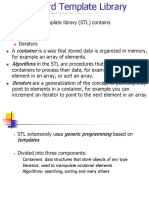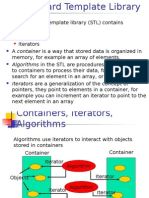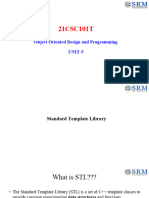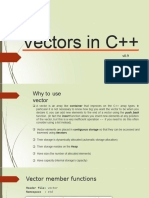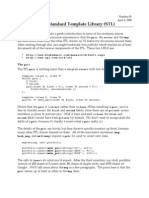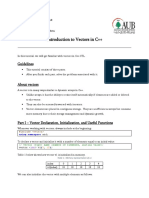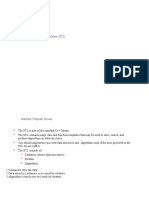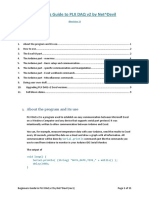0% found this document useful (0 votes)
41 views36 pagesC++ Vector and Iterator Guide
1) STL vectors can dynamically resize unlike C++ arrays. Principal vector functions include size(), empty(), resize(), reserve(), operator[], at(), front(), back(), push_back(), and pop_back().
2) The vector abstract data type supports functions like at(), set(), insert(), and erase() to access and modify elements. It also includes standard size() and empty() functions.
3) Vectors can be implemented using an array-based approach but this has limitations on capacity. The standard solution is to use an extendable array strategy, dynamically allocating more space when needed.
Uploaded by
Majd AL KawaasCopyright
© © All Rights Reserved
We take content rights seriously. If you suspect this is your content, claim it here.
Available Formats
Download as PDF, TXT or read online on Scribd
0% found this document useful (0 votes)
41 views36 pagesC++ Vector and Iterator Guide
1) STL vectors can dynamically resize unlike C++ arrays. Principal vector functions include size(), empty(), resize(), reserve(), operator[], at(), front(), back(), push_back(), and pop_back().
2) The vector abstract data type supports functions like at(), set(), insert(), and erase() to access and modify elements. It also includes standard size() and empty() functions.
3) Vectors can be implemented using an array-based approach but this has limitations on capacity. The standard solution is to use an extendable array strategy, dynamically allocating more space when needed.
Uploaded by
Majd AL KawaasCopyright
© © All Rights Reserved
We take content rights seriously. If you suspect this is your content, claim it here.
Available Formats
Download as PDF, TXT or read online on Scribd
/ 36

